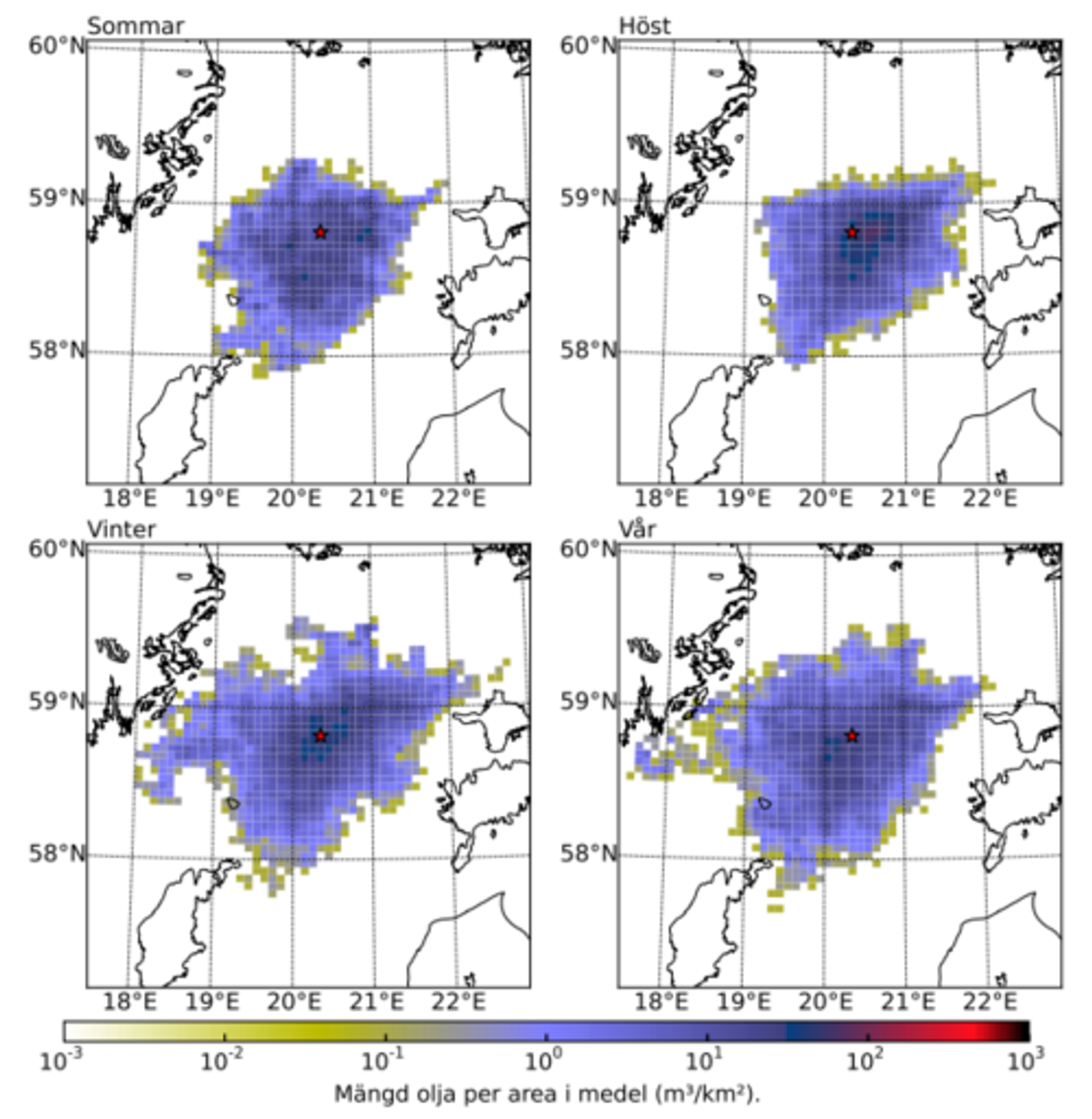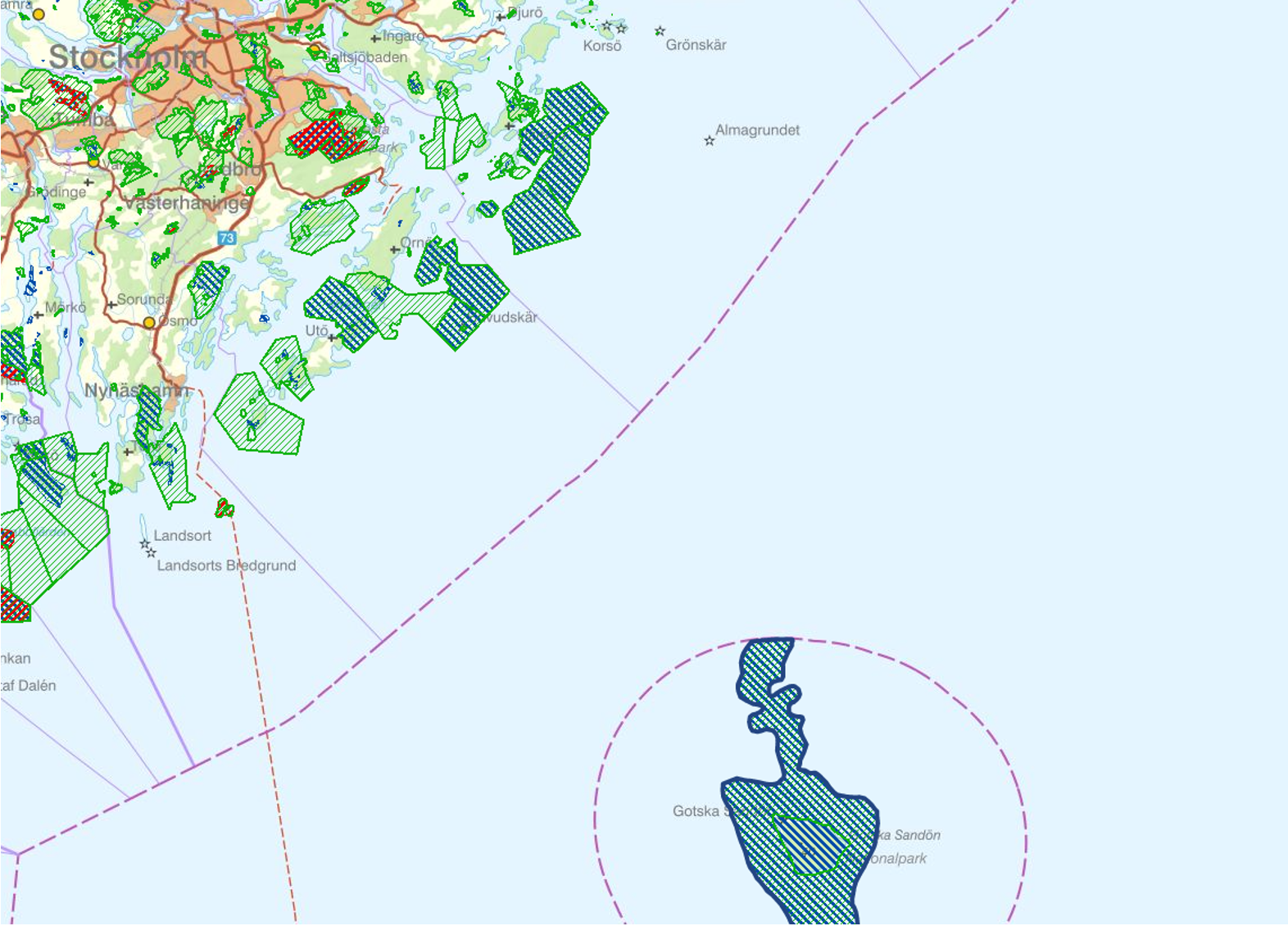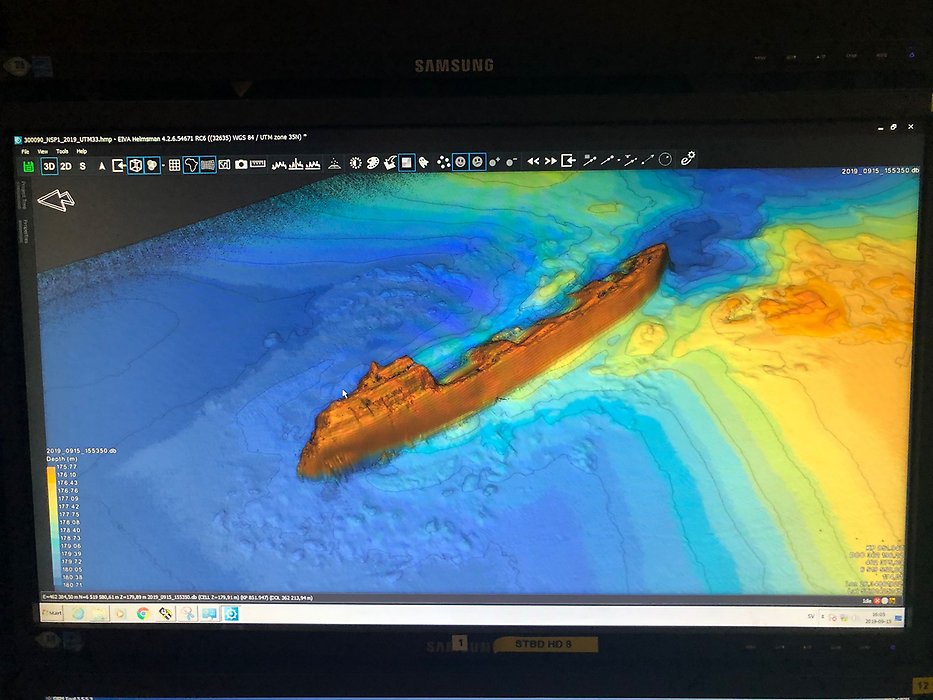Malmi
In 2023 and 2024, the Swedish Agency for Marine and Water Management (SwAM) led efforts to first inspect and then salvage oil from the shipwreck Malmi. In total, 44,000 liters (44 m³) of oil and oil-contaminated water were salvaged from the wreck.
Sinking
Malmi was en route from Gdynia, Poland, to Turku, Finland, on December 6, 1979. At 22:45, the vessel sent out a distress signal reporting severe listing, and shortly thereafter, the ship sank. At the time of the sinking, strong westerly winds were present. The Swedish Maritime Administration records note wind speeds of Beaufort scale 8 (17.2–20.7 m/s). Finnish investigation reports mention wind speeds of 18 m/s, which later increased.
Onboard were 25 crew members, one passenger, and two children. Reports indicate that none of the 28 people on board had time to board the lifeboats. Several individuals were rescued from the water by helicopters and the nearby Finnish vessel Bore Sky, but 14 people lost their lives during the wreckage, including the family with two children.
According to the official maritime inquiry, the captain stated that no one remained on board when he left the ship. He was the last to abandon the vessel. After the sinking, oil was reported on the water in the area.
Today, Malmi is situated approximately 78 km northeast of Gotska Sandön, resting at a 45-degree portside list on a seabed consisting of dense clay. The ship is partially embedded in the seafloor. The surrounding depth varies between 172–182 meters.

Photo: Ocean Discovery.
Environmentally hazardous wreck
Malmi was included in the Swedish Maritime Administration’s government report, which listed the 30 most environmentally hazardous wrecks in Swedish waters or Sweden's economic zone. A probabilistic risk assessment was conducted on these wrecks using the evaluation tool Vraka.
The assessment gave Malmi a risk score of 44, placing it third among the 30 most environmentally hazardous wrecks.
Nature conservation area
Oil spill simulations for Malmi were conducted by SMHI (Swedish Meteorological and Hydrological Institute), showing that, under certain conditions, oil could reach the southern Stockholm archipelago, Gotska Sandön, and the Salvorev area.

Figure from SMHI's report Oil Dispersion from Wrecks (2019), showing the most likely locations where the oil will end up, based on the season.
Gotska Sandön-Salvorev is a large area (> 60,000 hectares) with shallow sandy seabeds. It is classified as a Natura 2000 site and a national park. The grey seal (Halichoerus grypus) is a protected species commonly found on the northeastern side of the island, especially in autumn. Several bird species frequent the area, particularly in spring and early summer, using the island and surrounding waters as a resting place.
Protected areas in the southern Stockholm archipelago include nature reserves and Natura 2000 areas, important habitats for birds and grey seals. Additionally, the area surrounding the wreck and other major regions in the Baltic Sea are classified as spawning grounds for sprat.

Excerpt from the Swedish Environmental Protection Agency's tool Protected Nature, showing conservation areas in the southern Stockholm archipelago and the Gotska Sandön area. Blue and red areas represent Natura 2000 sites (for birds and species/habitat directives), while green areas indicate nature reserves.
Inspection and salvage operation
The Malmi salvage operation was divided into two phases. In 2023, SwAM’s contracted service provider, JD-Contractor, conducted an oil inspection and confirmed the presence of oil in three of the six targeted tanks. In 2024, oil was successfully extracted from these three locations.
Weather conditions affected the operation, requiring a phased approach. During weather delays, adjustments, maintenance, and training were conducted in the port of Nynäshamn.
Due to the great depth, diver intervention was impossible, leading to the development of a custom ROV-based hot tap system for tank penetration and valve installation. This system underwent extensive testing and optimization during the project. Four hot taps were installed for steam injection and oil extraction.
Minor discrepancies between the reported oil volume during the inspection (48 m³) and the actual recovered volume during the salvage operation (44 m³) were due to measurement methods influenced by ship movements and tank shape.
Although the recovered amount was lower than expected, the operation demonstrated that safe and efficient deep-water oil recovery is possible. The inspection and oil recovery were completed according to plan, method specifications, and risk assessments.
Costs of the operation
The detailed oil inspection of Malmi cost 29,120,000 SEK, and the oil recovery operation cost 12,480,000 SEK. The funding was provided by the Swedish government’s budget for environmental remediation and restoration of contaminated sites.
These costs can be compared to the potential expenses of an uncontrolled oil spill, which would have required intervention from the Swedish Coast Guard and municipal emergency services. Such an operation would involve significant direct costs, including personnel, vessels, aircraft, booms, and skimmers.
There would also be indirect costs, such as lost income for the fishing industry due to reduced or contaminated catches. Reduced tourism revenue if oil contamination affected beaches and the area's reputation. Environmental costs from temporary depletion of natural resources and ecosystem services, including impacts on bioturbation and fish prey availability.
These long-term costs are often much higher than the preventative removal of oil from hazardous wrecks.
Background
M/S Malmi (formerly named Sugar Transporter) was a diesel-powered cargo ship, built in Aberdeen, Scotland, by Hall Russell in 1957. It was originally designed to transport sugar from small ports in the West Indies. The first owner of Malmi was Silverton Services Ltd in London. In 1966, the ship was sold to the Finnish company Etelä-Suomen Laiva O/Y and renamed Malmi. The same company owned the vessel at the time of its sinking in 1979. In 1995, the company changed its name to ESL Shipping.
Ship Specifications
- Length: 120.7 meters
- Width: 16.23 meters
- Draft: 6.77 meters
- Deadweight tonnage: 6,787 tons
- Gross tonnage: 4,982 tons
- Engine: 3,000 HP diesel engine, single propeller
- Cargo at sinking: 6,570 tons of coal (1–10 cm pieces)
- Bunker capacity: 484 tons
At the time of the sinking in December 1979, Malmi carried approximately 83 tons of fuel, including 50 tons of heavy fuel oil (HFO) and the rest diesel. Additionally, unknown volumes of lubricating oils were on board.
Photos from the operations
Photogrammetry images were produced by Ocean Discovery and photos from the salvage were taken by JD-Contractor.














